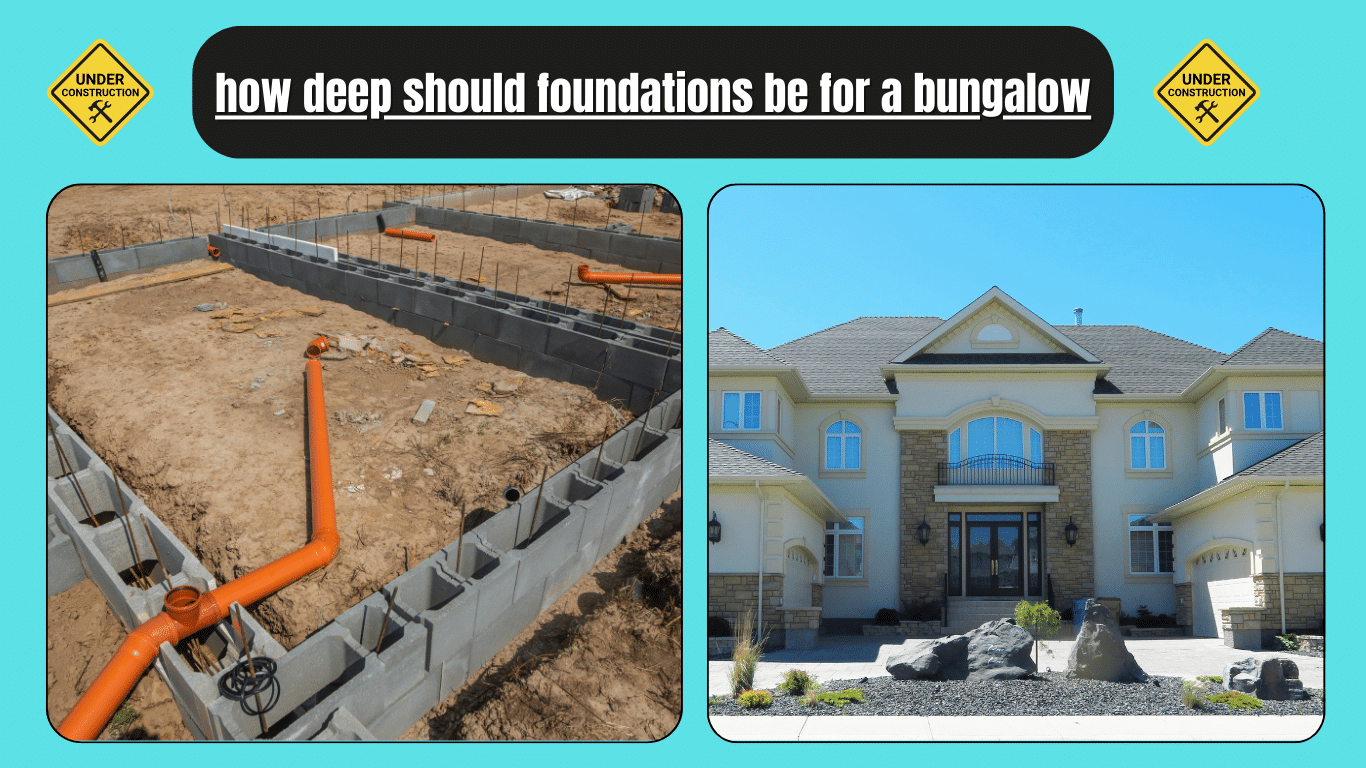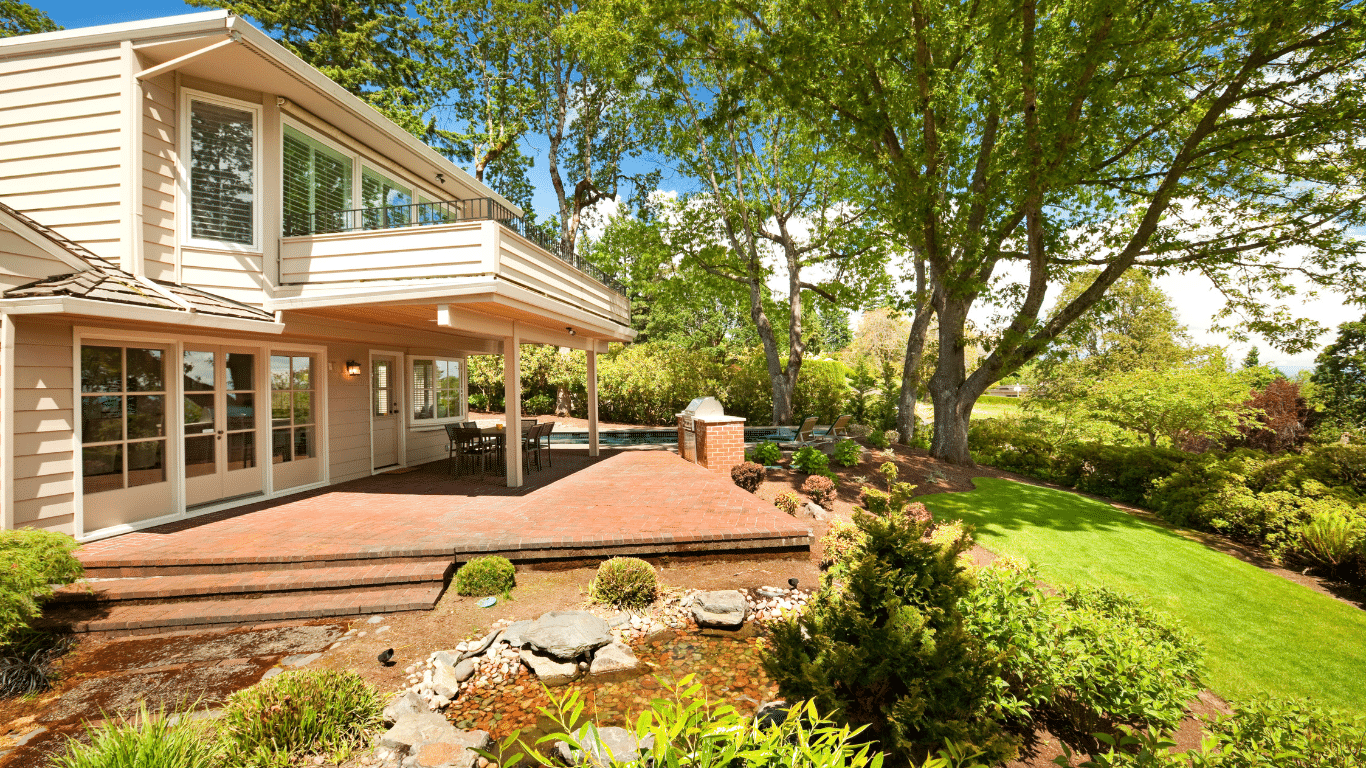Before the construction of any bungalow, it is necessary to know how deep should foundations be for a bungalow. The depth of the foundations for a bungalow is crucial for its stability and durability. It’s like the roots of a tree, anchoring the entire structure firmly into the ground. Generally, the depth depends on factors like soil type, the weight of the building, and local regulations. In stable soil conditions, shallow foundations can be as little as 1 to 2 feet deep.
However, in areas with poor soil quality or a high risk of natural disasters like earthquakes or floods, deeper foundations may be necessary. It’s essential to consult with experts, such as structural engineers, to determine the appropriate depth based on specific site conditions and requirements. Ultimately, getting the foundation depth right ensures that your bungalow stands strong for years to come.
How Deep Should Foundations Be for a Bungalow?
Building a bungalow is an exciting venture, but it’s crucial to get the foundations right. The foundation serves as the bedrock of your home, supporting its weight and ensuring stability against various forces like soil movement and natural disasters. So, how deep should foundations be for a bungalow? Let’s delve into this important question to ensure your dream home stands strong for years to come.
Fundamentals of Foundations
Before we determine the depth of the foundations, let’s understand what they are. Foundations are the structures upon which a building stands. They transfer the load of the building safely to the ground, preventing settlement or collapse. Foundations come in various types, including shallow foundations and deep foundations.
Factors Influencing Foundation Depth
Several factors influence the depth of foundations for a bungalow:
- Soil Type
- Building Load
- Climate and Environmental Conditions
- Local Building Codes and Regulations
Soil Type: Different soil types have varying load-bearing capacities. For instance, clay soils tend to shrink and swell, requiring deeper foundations for stability compared to sandy soils.
Building Load: The weight and size of your bungalow play a significant role in determining foundation depth. Larger and heavier structures require deeper foundations to distribute the load effectively.
Climate and Environmental Conditions: Regions prone to earthquakes, floods, or hurricanes require deeper foundations to withstand these natural forces. Additionally, areas with frost heave need deeper foundations to avoid ground movement during freezing temperatures.
Local Building Codes and Regulations: Local authorities set standards for foundation depths based on geological surveys and construction practices specific to the area.
Types of Foundations
Now that we understand the factors at play, let’s explore the types of foundations commonly used for bungalows:
- Shallow Foundations
- Deep Foundations
Shallow Foundations: Also known as spread footings, shallow foundations are typically used in areas with stable soil conditions. They’re constructed near the surface and spread the load of the building horizontally. Shallow foundations include slab-on-grade, strip, and mat foundations.
Deep Foundations: Deep foundations are necessary when the soil near the surface is unsuitable for bearing the building’s load. They transfer the load deeper into the earth, where the soil is more stable. Common types of deep foundations include pile foundations and drilled shafts.
How deep should foundations be for a bungalow?
While specific depths may vary depending on the factors mentioned earlier, here are some general guidelines for foundation depths:
- Shallow Foundations
- Deep Foundations
Shallow Foundations: In areas with stable soil conditions, shallow foundations can be as little as 1 to 2 feet deep for a bungalow. However, it’s essential to consult with a structural engineer to determine the appropriate depth based on soil tests and local regulations.
Deep Foundations: In regions with poor soil conditions or high seismic activity, deep foundations may be necessary. Pile foundations, for example, can extend tens of feet into the ground to reach stable soil layers. The depth of deep foundations for a bungalow can range from 10 to 50 feet or more, depending on the specific requirements of the site.
Key points: How deep should foundations be for a bungalow
How Deep are Bungalow Foundations?
The depth of bungalow foundations varies depending on factors such as soil type, building load, and local regulations. In areas with stable soil conditions, shallow foundations may only need to be 1 to 2 feet deep. However, in regions with poor soil quality or high seismic activity, deeper foundations ranging from 10 to 50 feet or more may be necessary to ensure stability and structural integrity. It’s essential to conduct soil tests and consult with professionals like structural engineers to determine the appropriate depth for bungalow foundations based on specific site conditions.
Which Foundation is Best for Bungalow?
The best foundation for a bungalow depends on various factors including soil type, building load, and local regulations. Common types of foundations for bungalows include shallow foundations such as slab-on-grade, strip, and mat foundations, as well as deep foundations like pile foundations and drilled shafts. The choice of foundation should be based on site-specific conditions and requirements to ensure stability, durability, and compliance with building codes.
How Much Land is Required to Build a Bungalow?
The amount of land required to build a bungalow depends on factors such as the size of the bungalow, setbacks required by local regulations, and any additional structures or amenities desired on the property. Generally, a bungalow typically occupies a single-story dwelling with a smaller footprint compared to multi-story houses. However, the land area needed will vary depending on factors such as the layout of the bungalow, outdoor space requirements, and any specific site constraints.
What is the Depth of the Foundation of a Bungalow?
The depth of the foundation of a bungalow can vary depending on factors such as soil type, building load, and local regulations. In stable soil conditions, shallow foundations may only need to be 1 to 2 feet deep, while in areas with poor soil quality or high seismic activity, deeper foundations ranging from 10 to 50 feet or more may be necessary. It’s essential to consult with professionals like structural engineers to determine the appropriate depth based on specific site conditions and requirements.
What is the Best Layout for a Bungalow?
The best layout for a bungalow depends on factors such as personal preferences, lifestyle needs, and site constraints. However, some common bungalow layouts include open floor plans with spacious living areas, well-defined sleeping quarters, and convenient access to outdoor spaces like patios or gardens. Additionally, considerations such as natural lighting, ventilation, and ease of movement should be taken into account when designing the layout of a bungalow to create a comfortable and functional living environment. Consulting with architects or designers can help homeowners create a customized layout that suits their needs and maximizes the potential of their bungalow.
Conclusion
The depth of foundations for a bungalow is a critical aspect of building construction. It ensures the structural integrity and stability of your home for years to come. By considering factors such as soil type, building load, and local regulations, you can determine the appropriate depth for your foundations. Consulting with professionals, such as structural engineers and builders, will ensure that your bungalow’s foundations are built to last.
FAQs
How deep should foundations be for a bungalow in sandy soil?
Foundations for a bungalow in sandy soil should typically be deeper compared to other soil types. A depth of at least 3 to 4 feet is recommended to ensure stability and prevent settlement.
What factors influence the depth of bungalow foundations?
Several factors influence foundation depth, including soil type, building load, local regulations, climate, and environmental conditions. Consulting with a structural engineer is advisable to determine the appropriate depth for your specific circumstances.
Are there specific building codes regarding foundation depth for bungalows?
Yes, most regions have building codes that specify minimum requirements for foundation depth based on factors such as soil conditions and seismic activity. It’s essential to adhere to these codes to ensure the structural integrity and safety of the bungalow.
What are the risks of having shallow foundations for a bungalow?
Shallow foundations pose risks such as inadequate support, increased susceptibility to soil movement, and potential structural damage over time. They may also compromise the stability of the bungalow, especially in areas prone to natural disasters.
How do I determine the appropriate foundation depth for my bungalow?
Determining the appropriate foundation depth involves conducting soil tests, considering building load, consulting local building codes, and assessing site-specific factors such as climate and environmental conditions. A structural engineer can provide expert guidance in this regard.
What is the average depth of foundations for a one-story bungalow?
The average depth of foundations for a one-story bungalow typically ranges from 3 to 5 feet, depending on factors such as soil type, building load, and local regulations. However, it’s essential to assess each case individually to ensure adequate support.
Do I need deeper foundations for a bungalow in earthquake-prone areas?
Yes, bungalows located in earthquake-prone areas typically require deeper foundations to withstand seismic forces. The depth may vary depending on the level of seismic activity in the region and specific soil conditions.
Are there cost-effective ways to ensure adequate foundation depth for a bungalow?
Cost-effective ways to ensure adequate foundation depth include optimizing foundation design, using appropriate construction techniques, and incorporating alternative foundation systems like helical piles or grade beams. Consulting with experienced professionals can help identify the most efficient solutions.
Can I build a bungalow with existing shallow foundations?
Building a bungalow with existing shallow foundations is possible but may require reinforcement or retrofitting to ensure sufficient support and stability. A structural engineer can assess the existing foundations and recommend appropriate measures to accommodate the new structure.
What are the consequences of inadequate foundation depth for a bungalow?
Inadequate foundation depth can lead to structural issues such as settlement, cracks in walls or floors, uneven settling of the building, and even structural failure in extreme cases. It’s essential to ensure proper foundation depth to prevent these potential consequences and maintain the integrity of the bungalow.





